Bert Williams and George Walker: selections from their first recording session, 11 October 1901
_____________________________________
page originally published on 3 December 2012; latest edit: 22 May 2023
_____________________________________
From the article “Bert Williams & George Walker: The Early Years” at the Jas Obrecht Music Archive (defunct site):
 On Williams & Walker:
On Williams & Walker:
Their images appeared on sheet music, cigarette ads, postcards, and in newspapers and magazines. Coverage of their 1903 command performance for England’s royal family was followed with rapt attention back home.
On Bert Williams:
This highly intelligent, dignified man was destined to spend his career wearing burnt-cork blackface and playing longstanding racial stereotypes…A sensitive integrationist, Williams was [repulsed] by the notion of wearing blackface and playing the stereotype. As an actor, though, he discovered that his new “coon mask” allowed him to fully step outside of his own personality to create a stage character: “It was not until I was able to see myself as another person that my sense of humor developed.”
___________________
According to my count, using the UCSB Victor recording discographies listed in the resources at the bottom of the page, there were 22 sides recorded during the first Bert Williams and George Walker Victor recording session, which took place on 11 October 1901.* The breakdown by Victor catalog number series and vocalist(s):
Bert Williams: 12 vocal solo recordings, with piano
- 900 series………………..6 sides (7″ and 10″)
- 1000 series………………1 side (7″ and 10″)
- 3600 series………………5 sides (10″ only)
George Walker: 5 vocal solo recordings, with piano
- 900 series………………..2 sides (7″ and 10″)
- 900 series………………..1 side (7″ only)
- 3600 series………………2 sides (10″ only)
Williams & Walker: 5 vocal duet recordings, with piano
- 900 series………………..2 sides (7″ and 10″)
- 900 series………………..1 side (10″ only)
- 3600 series………………2 sides (10″ only)
11 October 1901 recordings
I Don’t Like That Face You Wear (Ernest Hogan**)
Williams & Walker —The video provider says that this is the first recording made by Williams & Walker. This appears to be confirmed in the aforementioned article at Jas Obrecht Music Archive, “Bert Williams & George Walker: The Early Years”:
During October and November 1901, Williams and Walker recorded several seven-inch and ten-inch 78s for the Victor Talking Machine Co. in New York City. Most of these recordings were co-written by Williams and Walker and can be legally downloaded at http://www.archive.org . According to Ann Charters, Bert Williams provided the simple, unadorned ragtime-influenced piano accompaniment at their very first session, but master discographer Brian Rust credits C.H.H. Booth, who worked for Victor for many years playing piano and organ on ragtime, classical, and opera sessions.
Williams and Walker began on October 11th, performing together for their first selection, “I Don’t Like That Face You Wear.” Singing in a clear, confident voice with a minstrel-approved “coon” accent, Bert then cut several sides on his own, beginning with Cole and Johnson’s “In My Castle on the River Nile.”
______________________
In the course of the song, the lead singer (Williams) describes to another (Walker), an instance in which he was turned down by a lady. He had considered that his chances with her were favorable, for in trying his best to impress her while in pursuit he even went so far as to change his clothes “‘most every day.” However, she didn’t reject him due to his clothes, which she judged to be “alright.” The problem lay in her disapproval of his face:
“I don’t like that face you wear
Your big strong nose and your kinky hair.”
She said my clothes is alright,
but my face is a holy sight…
He also reveals that she prefers a man who has curly, rather than kinky, hair. The description of her preferred man in a line of the lyric as “a railroad porter with his skin so fair,” was provided (on 11/27/2020) in a comment by Jack, who corrected my previous transcription of the line.
.
above: Bert Williams (left), and George Walker in a scene from Sons of Ham c.1900
According to Obrecht, during the 11 October 1901 recording session Williams followed In My Castle on the River Nile with The Phrenologist Coon, words by Ernest Hogan and music by Will Accooe.
The Phrenologist Coon (m. Will Accooe, w. Ernest Hogan) – The song would appear to be somewhat typical of the genre which Hogan had helped to revive in the mid-1890s by composing them in the new ragtime style, featuring as it does stereotypical references to razors, melons, and chickens. However, the 1900 show in which it was introduced, Sons of Ham, is considered a step up from pure minstrelsy. Wikipedia says:
Williams & Walker had their greatest success to date with Sons of Ham, a broad farce that was perhaps most notable for its lack of the extreme “darkie” stereotypes which were then common. The pair had already begun to transition away from racial minstrel conventions to a more human style of comedy.
Obrecht indicates that Sons of Ham was well-received, noting that it ran two seasons, yet says nothing about it being more elevated than previous shows featuring Williams & Walker, though he quotes from a contemporary review which mentions its “many vaudeville features.” The same review notes that “Its second edition differs chiefly from the first in the addition of novel specialties, a brightening of costumes, and the introduction of new songs and choruses…” However, the reviewer oddly failed to mention Williams & Walker, who together and separately sang about half of the songs in the production.
Bert Williams solo, with piano accompaniment — recorded on 11 October 1901; issued on the 7″ single-faced disc Victor 992
.
audio file, VBR MP3 (2.5 MB), from the page The Collected Works of Bert Williams at archive.org:
___________________
My Little Zulu Babe (m. James T. Brymn, w. W. S. Estren) — This song from Sons of Ham was recorded as a duet by Williams & Walker during their first Victor session on 11 October 1901. A solo recording made by Bert Williams a few weeks later, on 8 November, a date on which he recorded several solos. In the show it was performed by Tobias Wormwood (Williams), Harty Lafter (Walker) and Company.
Bert Williams and George Walker vocal duet, with piano accompaniment — recorded on 11 October 1901 (take 1, 7-inch, takes M-1 and M-2, 10-inch); issued on the 7-inch single-faced disc Victor 1086, and the 10-inch single-faced disc Victor 1086
audio file, Ogg Vorbis MP3 (2.5 MB), from the page The Collected Works of Bert Williams & George Walker at archive.org:
.
MP3 audio file, from a Bert Williams and George Walker collection at archive.org:
.
The Williams solo version listed in the Williams Victor solo discography is absent from Internet Archive’s Collected Works of Bert Williams. There is good reason for this, because The National Recorded Sound Preservation Board of the Library of Congress has reported the recording lost.
________________
One of George Walker’s “solos,” with uncredited back vocals probably by Williams, was a song from Sons of Ham (1900-1901), titled Good Afternoon, Mr. Jenkins.
Good Afternoon, Mr. Jenkins (music: R.C. MacPherson, lyrics: Tom Lemonier)
Video provider victrolaman, says:
According to the folks at Archeophone Records, no copies of this recording, at the time of their Historic CD release of the “Bert Williams The Early Years, had yet been found”. So here for your enjoyment is that historic lost recording, being played here on Youtube.
Victrolaman speculates that Bert Williams may have played the ragtime piano accompaniment on this side, but Obrecht notes a difference of opinion on the matter:
According to Ann Charters [a biographer of Williams], Bert Williams provided the simple, unadorned ragtime-influenced piano accompaniment at their very first session, but master discographer Brian Rust credits C.H.H. Booth, who worked for Victor for many years playing piano and organ on ragtime, classical, and opera sessions.
.
(above, l. to r.) In costume for In Dahomey: George Walker, Aida Overton Walker, Bert Williams
(above, l. to r.) principle cast members of In Dahomey: Hattie McIntosh, George Walker, Aida Overton Walker, Bert Williams, and Lottie Williams
_________________________________
See also these Songbook pages on Bert Williams, George Walker, and Aida Overton Walker:
- Bert Williams and George Walker: selected sheet music slide show and gallery, 1896-1908
- Bert Williams and George Walker slide show and gallery, 1896-1909
- Aida Overton Walker slide show and gallery
Bert Williams late career:
- Bert Williams: selected recordings 1910-1920 + galleries: photos and sheet music
- Bert Williams photo gallery, 1910-1920
- Bert Williams: selected sheet music and record label gallery, 1910-1920
_________________________________
Sources
Victor discographies:
1. From the Encyclopedic Discography of Victor Recordings at UCSB.edu:
(note: The first discography below is the most complete because it is the only one at this source which reflects the fact that Bert Williams was the only one present in all three performer variations: W&W duets, Williams solos, and Walker solos.)
- Bert Williams Victor discography (instrumentalist: piano)
- Williams & Walker discography (musical group)
- Bert Williams Victor discography (vocalist: baritone solo)
2. Victor 78 discography at yktc.us
The huge Online 78 rpm Discographical Project evidently doesn’t include pre-matrix Victor recordings at this time (December 2012).
Other sources:
- “Bert Williams & George Walker: The Early Years” — by Jas Obrecht (@ defunct site jasobrecht.com)
- Bert Williams: The Early Years 1901-1909 — Archeophone Records product information
- Victor’s Use of Matrix Numbers — by Howard S. Friedman, published at Gilbert & Sullivan Discography (gasdisc.oakapplepress.com/matrix3.htm)
- Collected Works of Bert Williams — Internet Archive
- Collected Works of Bert Williams & George Walker — Internet Archive
_______________________________
Suggested Resources for Study
Background:
- The Development of an African-American Musical Theatre 1865-1910 — from the American Memory collections of The Library of Congress website — This article has divided the time frame 1865 to 1910 into six chronological parts. Each section contains a brief summary of developments in African-American musical theater during the period in focus, and sheet music for notable songs within the period. Noteworthy vaudeville shows and musicals are briefly described, and principle composers of musicals and other stage shows, songwriters, and performers are identified.
- African American Performers on Early Sound Recordings, 1892-1916 (Library of Congress)
- African American musical theater (Wikipedia)
- minstrel show / minstrelsy
- vaudeville
Online biographies:
- Encyclopedia of World Biography
- Wikipedia
- Black History Now
- AllMusic
- Broadway: The American Musical (pbs.org)
- Bert Williams — King of Comedy (Yesterday’s Papers)
Williams & Walker:
- Jass.com: Bert Williams & George Walker
- The Frogs: The Who, What, and Where of the Frogs (jass.com)
- Introducing Bert Williams: Burnt Cork, Broadway, and the Story of America’s First Black Star by Camille F. Forbes (2008)
- Chapter 2: The Williams and Walker Years, pp. 37-163
- History of African American Theatre, A — by Errol G. Hill, James Vernon Hatch (2003) – Google eBooks limited preview
- pp. 162ff in Chapter 5, “New vistas: plays, spectacles, musicals, and operas” by Errol G. Hill
- Williams, Walker and Walker section of the Schomburg Exhibit “Harlem 1900-1940, an African-American Community” (exhibitions.nypl.org/harlem)
George Walker:
books:
- Introducing Bert Williams: Burnt Cork, Broadway, and the Story of America’s First Black Star by Camille F. Forbes (2008) – Google eBooks preview available
- Nobody: The Story of Bert Williams by Ann Charters (1970)
- The Last “Darky”: Bert Williams, Black-on-Black Minstrelsy, and the African Diaspora by Louis Chude-Sokei (2005) — Google eBooks
articles:
- “Bert Williams,” by Booker T. Washington, in Interesting People column of American Magazine, Vol.70 (1910). pp. 600-601, 603-604 (Google eBooks)
- “The Comic Side of Trouble,” by Bert Williams, American Magazine, Vol. 85 (1918), pp. 33-34, 58, 60-61 (Google eBooks)
____________________
Footnotes
* (updated, 13 November 2020) Since, according to the “pre-matrix” matrix listings in the Bert Williams discography at the Discography of American Historical Recordings (DAHR) at UCSB.edu, there are A (7-inch) and B (10-inch) prefixes assigned to each of twelve sides in the 900 series recorded by either Bert Williams, George Walker, or both on 11 October 1901, I originally surmised that, with the exception of A-999 and B-999 which have different performer credits, each of the A and B pairs of the 900 series are identical except for the disc size, the same recording having been issued in two sizes (A=7-inch, B=10-inch). However, closer inspection of the matrix numbers provided at DAHR for 7 and 10-inch recordings of a single song recorded on 11 October 1901 by Williams and Walker suggests that they may represent separate recordings in other cases (besides 999) as well. Further investigation in this area is required.
There are an additional nine 10-inch sides in the 3600 series recorded by one or the other of the two artists or both, each of which appears to be a different (at least in some cases longer) recording of one of the eleven songs in the 900 series. There is also a single Bert Williams solo recording in the Victor 1000 series issued in both 7″ and 10″ sizes (A-1086 and B-1086, My little Zulu babe) from the 11 October session.
There is a thorough examination of Victor’s use of matrix numbers in an article by Howard S. Friedman, here. According to Friedman, Victor had no matrix numbers prior to obtaining rights to the Berliner recording process (in 1903?) and used catalog numbers instead. Friedman says that Victor used only the A prefix for all discs issued regardless of size until 30 April 1903. This appears to be contradicted by the A and/or B prefixes assigned in the DAHR Victor discography cited above to many of the sides recorded by either Bert Williams, George Walker, or Williams & Walker in October and November 1901. The discrepancy suggests that, in order to differentiate Victor pre-matrix 10″ discs from the 7″ discs with identical original catalog numbers, the DAHR discographers may have assigned B prefixes to the pre-matrix 10″ recordings which originally had A prefixes. Once Victor began making true matrix numbers, says Friedman, prefixes were used to indicate disc size: A=7-inch, B=10-inch, and so forth.
I say the 3600 series sides are “at least in some cases longer” in light of the following information. In the product description of the collection Bert Williams: The Early Years 1901-1909, released by Archeophone Records in 2004, they refer to 15 included sides from 1901 sessions. Archeophone notes that long and short versions of five of these songs were issued, and that while typically the longer version varied from the shorter only by the repetition of a verse or chorus, this was not always the case: “Listeners who have never heard these before will be surprised especially on “Face” and “Carrie” at how different the versions could be.”
The claim by Obrecht of a second Williams & Williams October 1901 recording date in the article “Bert Williams & George Walker: The Early Years” (at the defunct site jasobrecht.com) is evidently incorrect. Obrecht made the following unsubstantiated claim:
Two days later [after the initial 11 October 1901 session], Bert Williams was back in the studio for four more solo recordings – a new take of “The Ghost of a Coon,” as well as “The Fortune Telling Man,” “My Little Zulu Babe,” and “She’s Getting More Like the White Folks Every Day,” which satirized fashion trends.
I’ve seen no evidence of recordings by Williams on 13 October 1901, or on any other date in October 1901 except 11 October. The aforementioned Bert Williams Victor Discography indicates that the four sides specified by Obrecht, one in the Victor 900 series and three in the 1000 series, were all recorded by Williams on 8 November 1901.
Two of the songs in the four additional sides recorded by Bert Williams on 8 November 1901 had been previously recorded during the first session (11 October), The ghost of a coon, and My little Zulu babe. The two new songs recorded during the second session were The fortune-telling man, and She’s getting more like the white folks every day. Each of the two new songs had words and music co-written by Bert Williams and George Walker.
______________________
** From Wikipedia:
 Ernest Hogan (born Ernest Reuben Crowders; 1865 – 1909) was the first African-American entertainer to produce and star in a Broadway show (The Oyster Man in 1907) and helped create the musical genre of ragtime.[1]
Ernest Hogan (born Ernest Reuben Crowders; 1865 – 1909) was the first African-American entertainer to produce and star in a Broadway show (The Oyster Man in 1907) and helped create the musical genre of ragtime.[1]
A native of Bowling Green, Kentucky, as a teenager Hogan worked in traveling minstrel shows as a dancer, musician, and comedian. In 1895 Hogan published several popular songs in a new musical genre, which he named ragtime.[2] These hit songs included “La Pas Ma La” and “All Coons Look Alike to Me”. The success of this last song created many derogatory imitations, known as “coon songs” because of their use of racist and stereotypical images of blacks.
While Hogan was considered one of the most talented performers and comedians of his day,[3] his contribution to the racist “coon song” craze haunted him. Before his death, he stated that he “regretted” using the racial slur in his song [sic].
The last sentence in the quote above from the Wikipedia article suggests that Hogan regretted using a racial slur in a single song that he wrote, but fails to specify the racial slur or the song being referred to. I surmise that they mean that, late in his life, Hogan regretted having used the word “coon” in the song “All Coons Look Alike to Me” (1896) and in other songs, which may have given rise to the “coon song” trend. Of songs recorded by Williams & Walker and by Bert Williams solo during the pair’s first historic Victor session on 11 October 1901, Hogan wrote the words and music of “I Don’t Like That Face You Wear” and the lyric of “The Phrenologist Coon.”












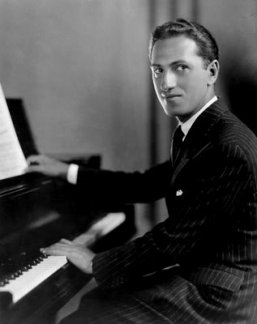

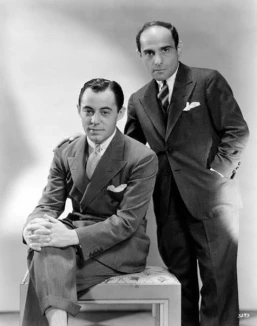

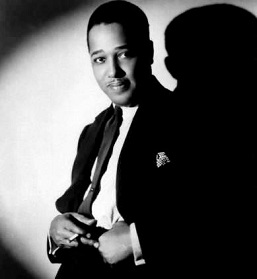



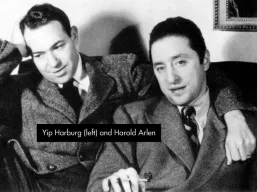
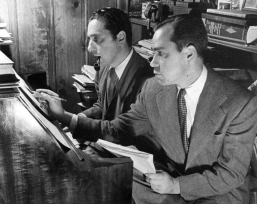



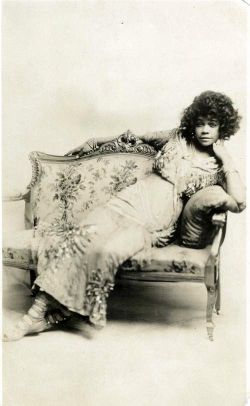





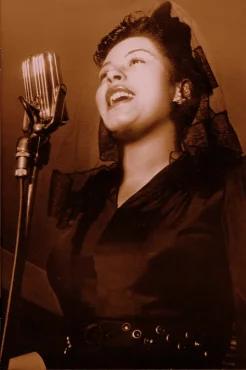




Nov 27, 2020 @ 17:26:25
The lyric “real old poser with a skin so fair” (as you’ve written it here) is actually “a railroad porter with his skin so fair”. I know because I’ve seen the sheet music for that song.
LikeLiked by 1 person
Nov 27, 2020 @ 20:42:08
Thanks, Jack! I’ll make the change ASAP and credit you for providing the correct words in that phrase.
LikeLike